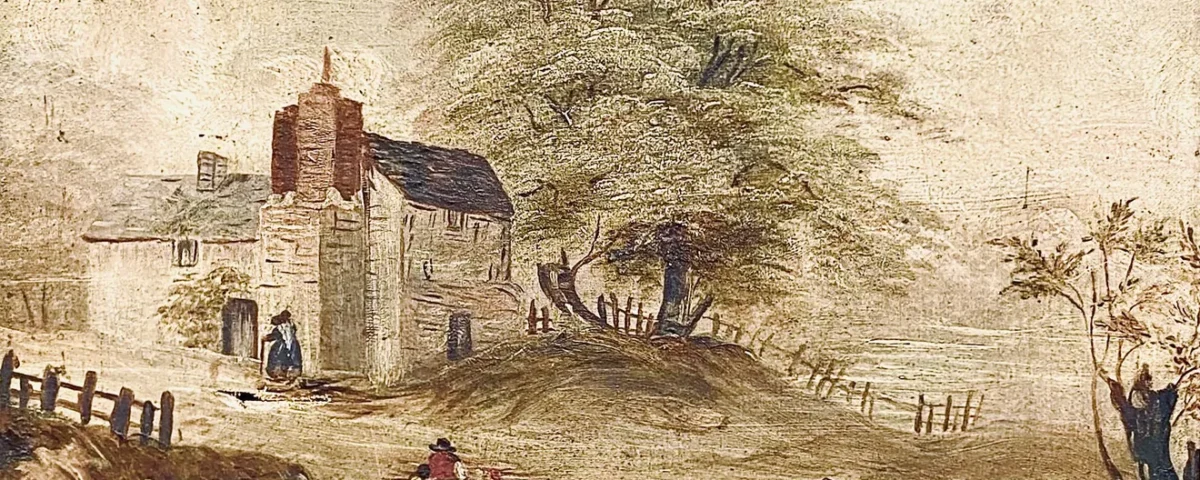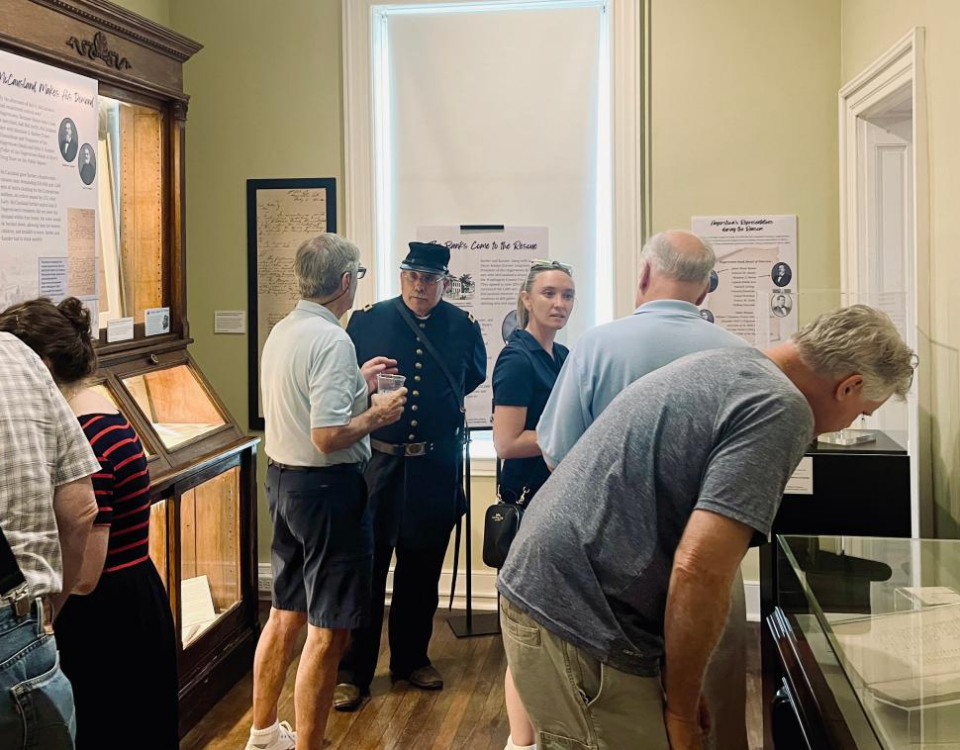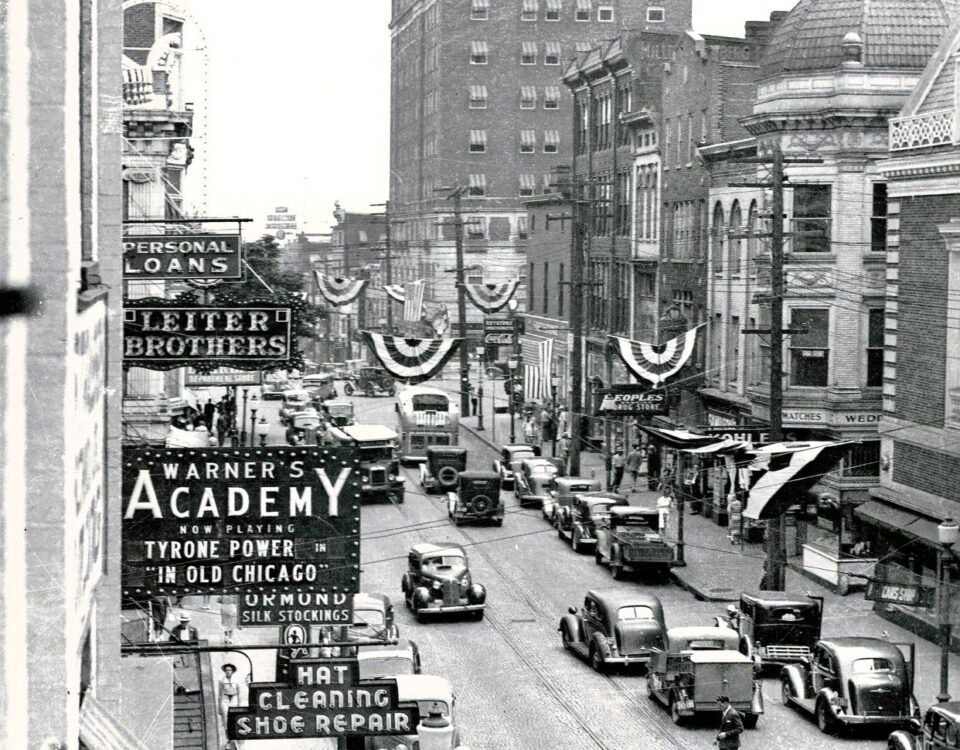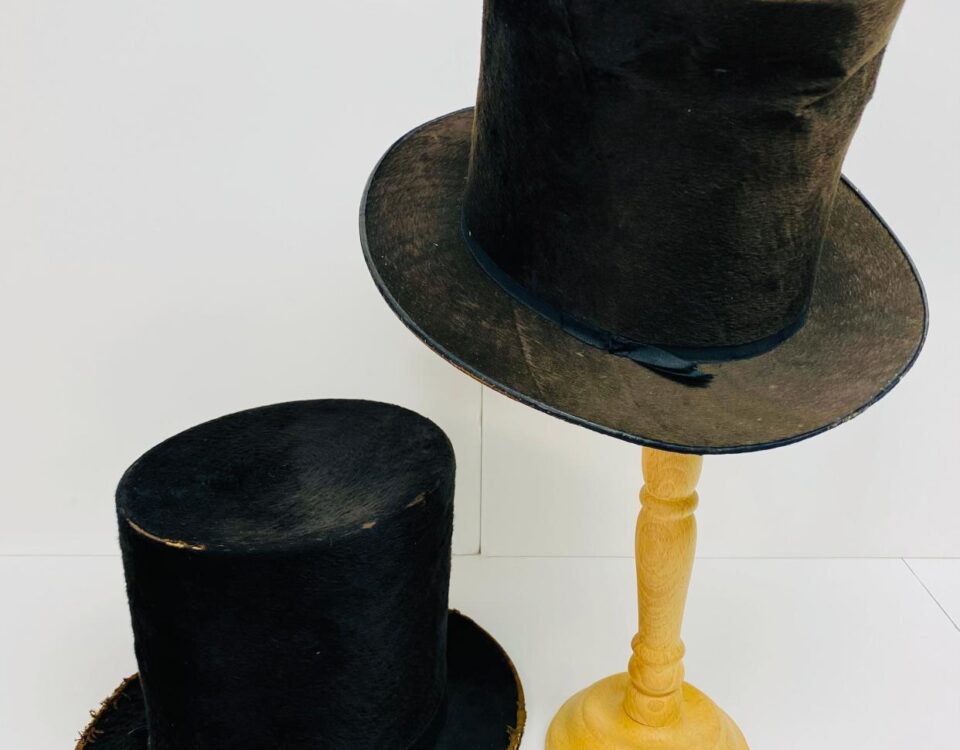Article Author: Abigail Koontz (This article originally appeared on The Herald-Mail January 14, 2024)
In the early 1860s, Linda Wert, a student at the Hagerstown Female Seminary, packed up her painting supplies and headed off to paint the Hager Mill, only an eight-minute walk from campus.
Wert’s painting, which she later titled “The Old Hager Mill,” now resides in the Washington County Historical Society collection. It represents a young woman’s story, and the history of an institution in Washington County that provided young women with vital education in the 19th century.
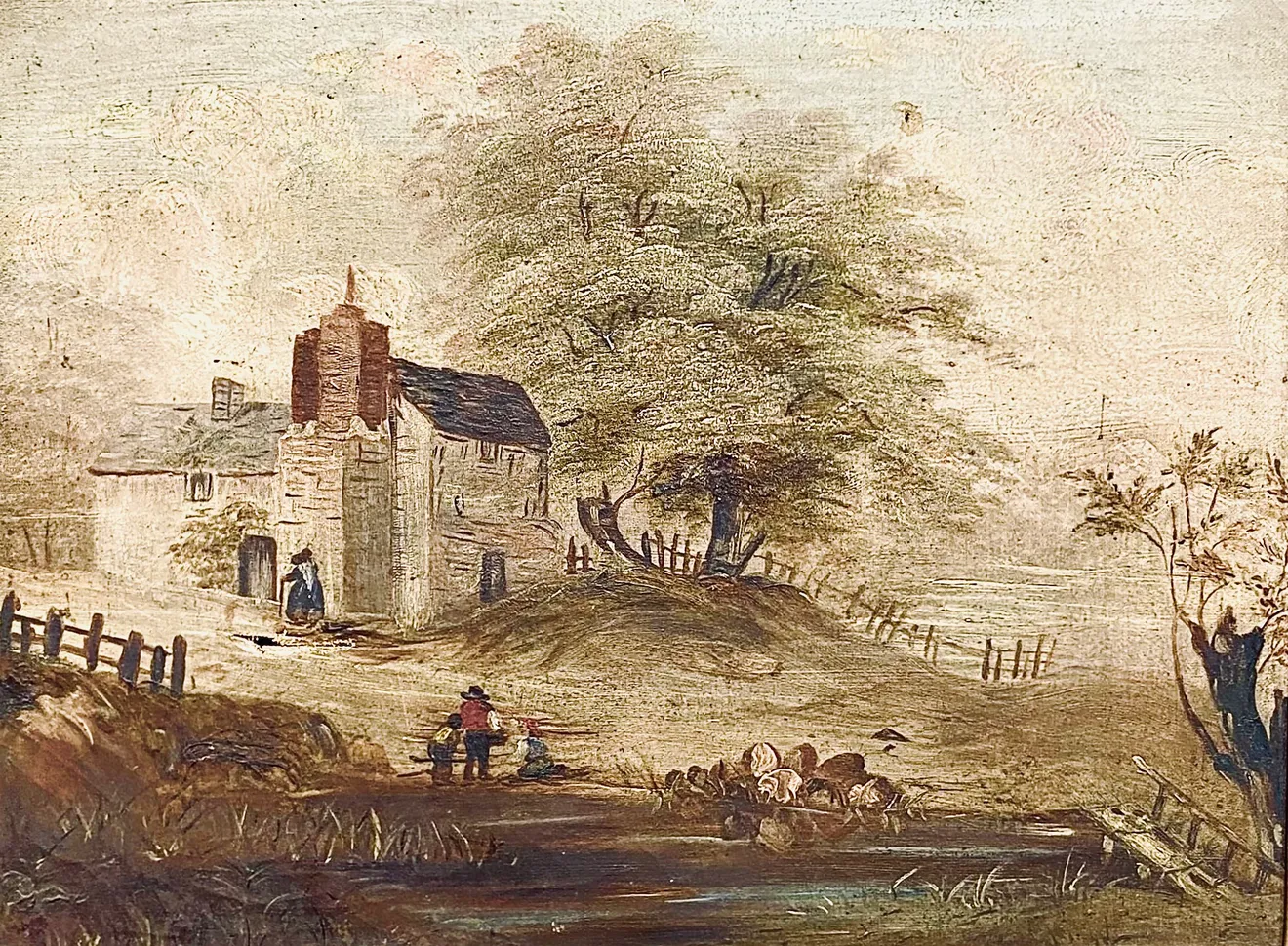
This month, the painting becomes the first item selected for a new restoration program that invites donors to help preserve the important artifacts in the society’s collection.
Malinda “Linda” E. E. Wert (also spelled Wirt) was born on Aug. 2, 1841, in Millersburg, Pa., to Simon and Sarah (Mark) Wert.
The Wert family deeply valued education; of the five Wert children, three daughters and one son pursued higher education. The 1860 census recorded Linda Wert’s occupation as “Attending Female Seminary,” indicating she had already begun her education at the seminary, nearly 96 miles from Millersburg.
The Hagerstown Female Seminary was a young institution when Linda Wert arrived. Built in 1853 by the Evangelical Lutheran Church, the seminary stood prominently on an 11-acre tract of land situated at what is now Washington Park, between East Antietam and East Baltimore Streets.
Built in a Greek Revival style, the seminary featured a full-height entry porch and four Ionic columns facing Mulberry Street. The brick building, composed of four stories and three wings, had a prominent cupola, encompassing a view of Hagerstown and South Mountain. The well-tended grounds held more than 100 evergreen trees and 500 other tree varieties.
Arriving as a boarding student in 1859, age 18, Linda settled into a dorm room, attending school with 100 other female students. Her four-year curriculum included one ancient and one modern language, English literature, composition and rhetoric, and music and art courses. She had access to a library of literary and scientific texts, as well as physical fitness programs.
Linda most likely painted The Old Hager Mill during an art class. Her painting captures a pastoral landscape of the Hager Mill, built by Daniel Stull and Nathaniel Rochester in 1790. The mill still stands today near 276 Mill Street, along a bend in the road beside Hager Park.
Andrew Hager operated the mill during the Civil War, when Confederate soldiers raided it for supplies. Linda’s brushstrokes, made just before the war, capture a tranquil scene: A bonnet-clad woman walks with a cane while others work by the water.
Linda completed several terms before the Civil War began in April 1861. Records do not tell us which students and teachers remained in Hagerstown, or who returned home to their families across Maryland, Pennsylvania and Virginia.
The Hagerstown Female Seminary witnessed the aftermath of the Battle of Antietam in September 1862, and the Battle of Gettysburg in July 1863, when the seminary’s buildings and grounds were used as a military hospital for Federal and Confederate soldiers. In addition, Union forces set up artillery on the seminary grounds in July 1863, when Union and Confederate cavalries clashed in Hagerstown following the Battle of Gettysburg. The seven-hour skirmish resulted in 200 casualties.
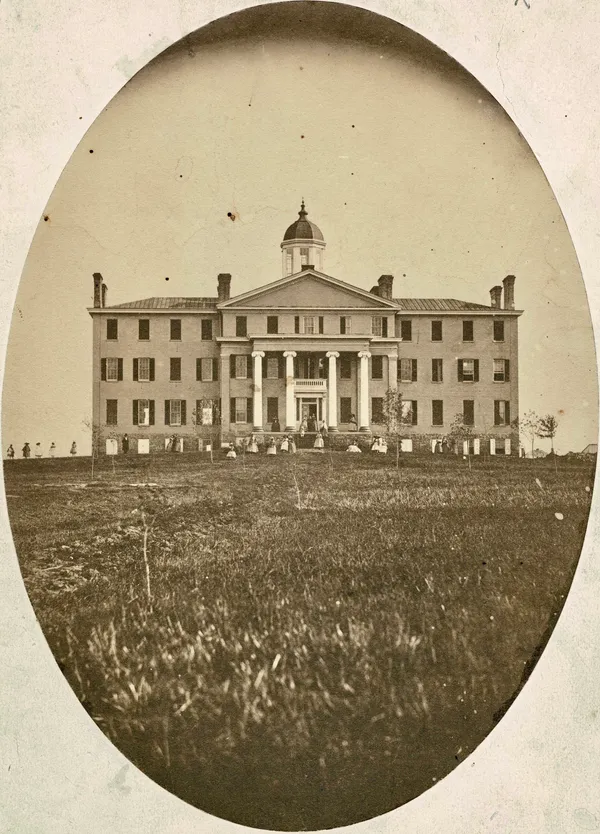
The Hagerstown Female Seminary witnessed the aftermath of the Battle of Antietam in September 1862, and the Battle of Gettysburg in July 1863, when the seminary’s buildings and grounds were used as a military hospital for Federal and Confederate soldiers. In addition, Union forces set up artillery on the seminary grounds in July 1863, when Union and Confederate cavalries clashed in Hagerstown following the Battle of Gettysburg. The seven-hour skirmish resulted in 200 casualties.
It is unclear whether Linda remained at the seminary during this time; most likely students returned to their families. But we can imagine the seminary during these years, when local and national events converged and female students’ lives and educations were upturned by civil war.
In June 1875, the seminary welcomed the Rev. Cornelius Luther Keedy as its principal. Keedy, born in 1834 in Rohrersville, had been educated at the Gettysburg Lutheran Theological Seminary.
Keedy purchased the seminary in 1878, during institutional financial challenges, and devoted himself to its administration. The seminary became a center of women’s education, attracting female students from many states.
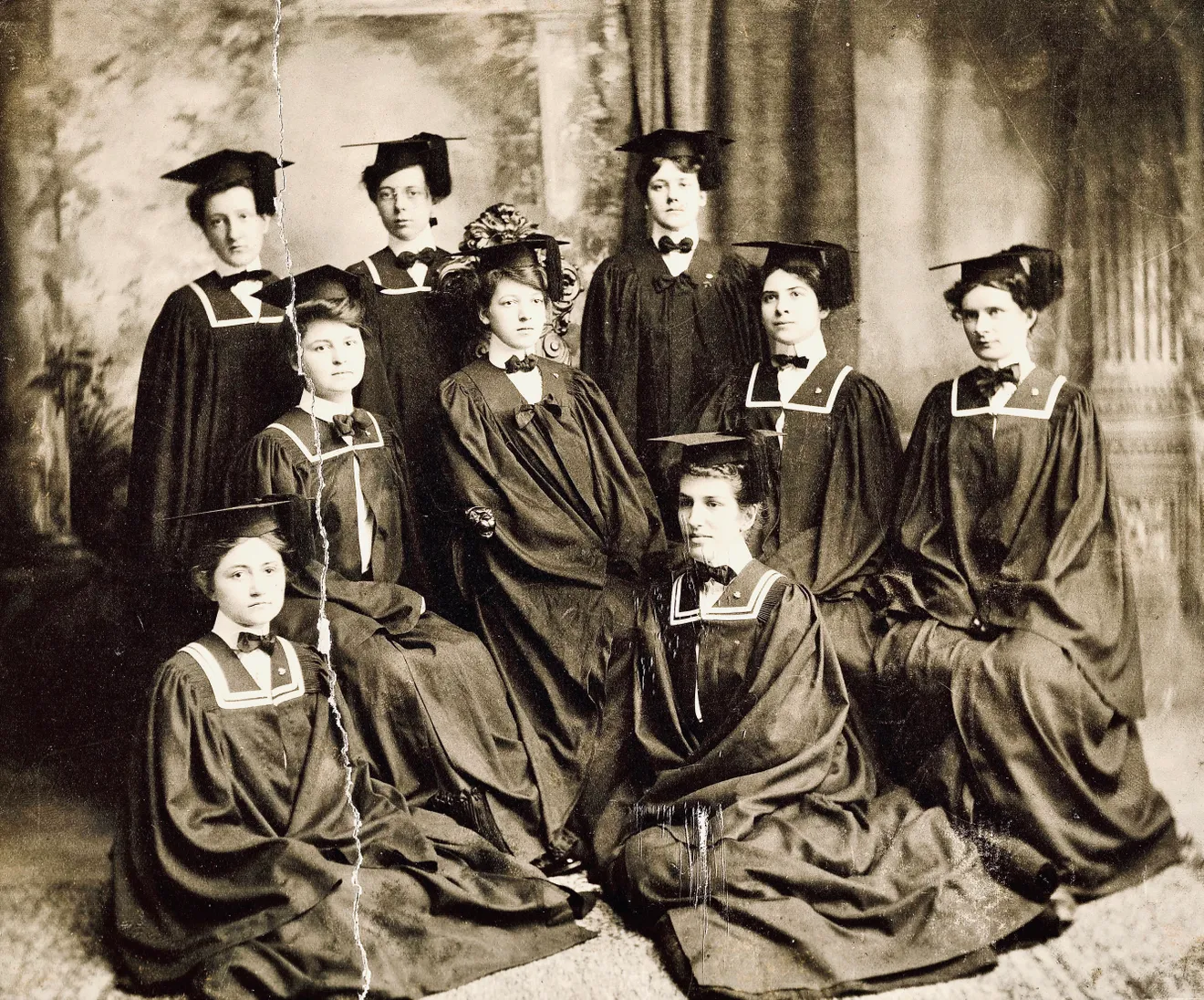
In 1889, Keedy renamed the seminary Kee Mar College, a combination of the first three letters of his surname and his wife Elizabeth’s maiden name, Marbourg. Cornelius and Elizabeth lived in Hagerstown until his death in March 1911.
With Keedy’s passing, Kee Mar College closed its doors, having educated women for 58 years. But the building did not remain dormant long; the Washington County Hospital purchased the property that same year.
The hospital desperately needed the large college building. A fledgling organization chartered by Maryland in 1904, the hospital had operated out of the M.P. Moller residence with only 10 beds, six staff and 12 physicians. After the seminary building was acquired, renovations transformed it into a fully functional hospital with 46 beds, growing to include x-ray machines, trained graduate nurses, laboratories and expanded wings.
By 1950, most of the original seminary building was torn down as the hospital expanded. Today, years after the hospital’s relocation, the property is now Washington Park, a large expanse of green space with a historical marker at the corner of King and East Baltimore streets.
After graduating in the 1860s, Linda Wert returned to live with her parents in Millersburg. She taught in local schools for 40 years. By 1900, with both parents having passed away, she lived with relatives, retiring by 1910 and moving in with her niece and nephew-in-law in Chambersburg, Pa. She died Nov. 16, 1924, at age 85.
Wert had been a young adult during the Civil War and had lived into the Roaring Twenties. Her painting, The Old Hager Mill, will be the first adoptable artifact in our new Adopt an Artifact program beginning this month.
This program allows donations to directly support specific WCHS artifacts that require restoration or storage, such as The Old Hager Mill, whose frame and canvas need professional restoration. Visit our GoFundMe page here: https://gofund.me/0cae2c5c for more information about this program and to make a donation. We can’t wait to see the colors of Wert’s painting come to life after nearly 160 years.
Abigail Koontz is the curator/program director for the Washington County Historical Society.

